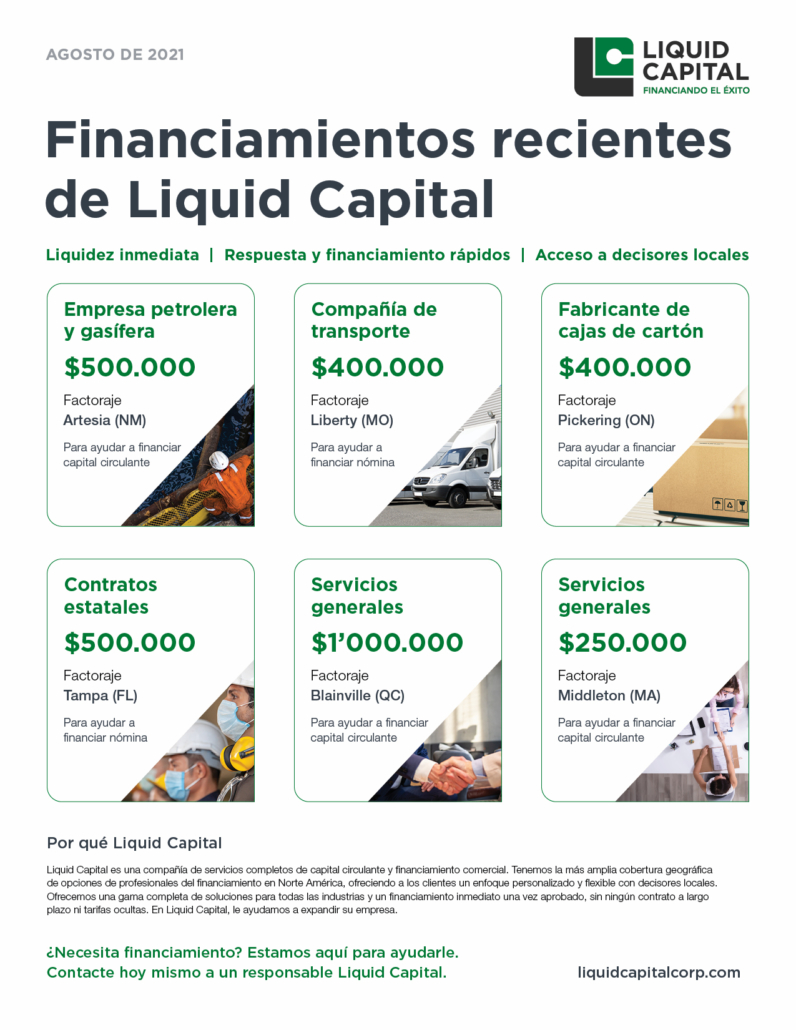Listado mensual: agosto, 2021
Building self-care into your business
/en Sin categorizar, Business Growth/por Jessica AntonyStressful days and sleepless nights are common when running a business. By adding self-care routines into your day, you can mitigate some of those worries to become more fulfilled and rested.

Entrepreneurs are a special breed. While you get to pave your own way you also have to deal with any roadblocks that come up as you go. It’s a lot of work, but worth the effort in order to be able to build your own business from scratch.
That said, the nature of being your own boss means that there’s nobody else to turn to for help when things become overwhelming or stressful. Where does your mental health fit into your own business strategy? Keep reading for tips on building self-care into your business.
Stress and entrepreneurship
Working for yourself means that you are faced with more challenges and fewer resources than non-entrepreneurs. Michael Freeman, a researcher from the University of California, explains that “entrepreneurs have lower initial earnings, lower earnings growth, lower long-term earnings, greater work stress, and more psychosomatic health problems than employees.” This means that issues like depression, anxiety, and ADHD are more common among those who choose to work for themselves.
A 2019 study from the Canadian Mental Health Association (CMHA) found that rates of stress are even higher among women entrepreneurs. Without the programs or policies for leave and other supports you might find in a large organization, many business owners are left to care for their mental health on their own.
Brigette, a Quebec-based event planner, puts it succinctly: “I can’t go higher than me to try to find help.”
In that same 2019 study, CMHA found that 23% of entrepreneurs surveyed said that they simply didn’t know where to turn to access mental health support, which left them without the help they needed.
Be your own self-care advocate

When you’ve moved beyond the growth stage of your business and are more firmly established, you have more options available to you to support your mental health, including that of your staff.
That support is an investment. If you don’t take care of your mental health, your business is at risk when you’re the one at the helm. Here are some actions you can take to support yourself as you continue to build your business.
Delegate work
Being the leader doesn’t mean that you need to have your hands on every aspect of your business. In fact, you’ve grown it and hired staff so that you don’t need to manage every detail! When your workload is so overwhelming that you find yourself losing sleep, experiencing brain fog, or unable to function as you normally would, it’s time to delegate some of your workload.
Take an inventory of your tasks and determine which items could be passed along to staff who have the capacity to take them on. Once you free yourself up to rest and recharge, you can focus on the big-picture issues and important decisions for your business.
Join a formal support network
Are there industry-specific associations or organizations in your city? Have you connected with other entrepreneurs? If not, consider joining a national association, like the US Association for Small Business and Enterprise, the National Federation of Independent Business, the Canadian Federation of Independent Business, or the Women’s Enterprise Organization of Canada.
These kinds of organizations are developed to serve entrepreneurs — and accessing a support network or connecting with others who understand where you’re coming from can help to alleviate some of the stress of being your own boss.
Seek professional care
The advice of a mental health professional is one of the most effective means of determining the course of action best suited to your needs and stressors. While some people are nervous about how they will be perceived by their peers for accessing mental health care, it’s important to recognize that the stigma around mental health care is waning.
In 2019, for example, 65.5% of US adults received mental health treatment. If you have more than 10 employees, consider offering an employee assistance program to support you and your team.
These programs can help you and your staff with mental health concerns or to prevent burnout, navigate conflict or transitions, and manage stress. Contact the Canadian Employee Assistance Program Association or find the best US provider for your needs.
Being an entrepreneur is both rewarding and taxing, but your business shouldn’t come at the cost of your own health. By delegating work to your team, joining a support network, or seeking professional care, you’re taking a step toward ensuring the long-term viability of the business you’ve worked so hard to build.
Part 2 up next: Positive mental health practices for entrepreneurs
Then, get 10 business quotes for a jolt of motivation
Six digital marketing pillars to improve ROI
/en Biz Tips, Sin categorizar/por Mark Glucki
Businesses have been adapting swiftly into digital sales and marketing — finding new ways to drive revenue even though they might not fit into a traditional “online selling” model. If you’re in this same boat, you may be wondering what digital marketing pillars you should focus on to increase your presence and give you a better shot at finding online leads — and closing deals.
We recently reviewed how to build a smart digital marketing plan on a budget. Now, with industry and marketing opportunities changing so rapidly, you might want to dig deeper into the right digital marketing mix to promote your business and spend your resources wisely.
For digital marketing, in particular, there are six main areas of focus — pillars — that will help you build an online presence and effectively promote your business, products and services.
Note that you may not choose to focus on every pillar, especially if budgets and people resources are tight. But by focusing attention on one or two of these, you can dedicate the right amount of time and money to give you a greater chance of achieving your goals.
Digital Marketing Pillar 1:
Content Marketing
“Content” is a form of marketing focused on creating, publishing, and distributing content for a particular audience online. This can be blog articles, web pages, landing pages, eBooks, white papers, infographics, videos, webinars and many other formats.
According to the Content Marketing Institute (CMI), marketing is impossible without great content. «In short, instead of pitching your products or services, you are delivering information that makes your buyer more intelligent. The essence of this content strategy is the belief that if we, as businesses, deliver consistent, ongoing valuable information to buyers, they ultimately reward us with their business and loyalty.»
If you’re new to content marketing, start by outlining your customers’ frequently asked questions. Then answer those in quick blog articles and publish them on your website once a week, and promote them on the social media platform that your target audience is on the most. This will get you well off to the races!
Digital marketing pillar 2:
Native advertising
Also known as sponsored content, native advertising matches the style of the platform it appears on. Native advertising comes in the form of videos, articles, or editorials.
In the past, this type of content was commonly called «advertorials» and would show up in magazines, almost masquerading as a seamless transition from one page to the next. Now, there are many more opportunities to deliver native advertising that will also be valuable to readers.
«Think of native advertising as a way of distributing your high-quality content so it can get discovered by consumers who might not yet know enough about your brand to engage with that content on your owned media channels,» explains CMI.
Instead of publishing all your great thought-leadership content on your own site, you may want to pay to have this content appear on a third-party site that has a bigger audience, more reach and can get your brand some great exposure.
Digital marketing pillar 3:
Pay-per-click (PPC)
PPC is also commonly referred to as Google Search (since it’s the most common platform for this advertising, although other search engines such as Bing offer options. PPC is a form of advertising that allows marketers to set up campaigns on search engines to drive traffic to websites or landing pages. The advertiser pays the publisher directly, which is most often based on when someone clicks the ad — hence the name. Other online search pricing is based on the number of impressions displayed.
Note that with PPC, you’re bidding in an auction-style setting, and the terms you may want to be discovered for are likely on the radar of competitors. Some of your fellow advertisers may have deep pockets and be will to spend more to get to the top of search results. So be careful not to spend too much money on the wrong terms, and look for ways to niche.
Digital marketing pillar 4:
Search engine optimization (SEO)
SEO is a popular method of marketing, where marketers target unpaid traffic. The goal is to improve the quality and quantity of website traffic to a website or web page from search engines.
Popular vendor SEMRush explains SEO simply: «SEO is the art and science of persuading search engines such as Google, Bing, and Yahoo, to recommend your content to their users as the best solution to their problem.»
By optimizing the content on your website and making use of keywords that people are searching for, the search engines will understand who your company is, what you offer, and know that you are a credible resource to direct people to when they are searching for information.
Digital Marketing pillar 5:
Social media marketing
When you make use of social media platforms and channels to promote products or services, this is known as social media marketing (SMM). Popular forms of SMM include Facebook Advertising, Instagram Ads, and TikTok videos.
But before you can advertise, you need to create great content and publish it on the platforms. For businesses, this can include posting thought-leadership blogs, helpful resources and guides, videos of your experts explaining how they help (or teaching your audience something valuable), and even special offers that will capture attention.
Buffer explains that there are five SMM pillars to follow, and only the final component is the actual advertising area where you spend money.
Digital marketing pillar 6:
Email marketing
Email marketing is far from dead. In fact, it’s thriving and has garnered a second wind in the business world for delivering helpful information and valuable promotions of products or services.
But «email marketing» isn’t just a direct message from you to individual customers, and it’s not spam either. As Hubspot explains, it’s somewhere in between. «It’s one of the few marketing channels we can use to build an authentic connection with the humans that keep our businesses alive. … Your customers don’t give their information lightly, and — if used right — email marketing can be both a relationship-building and profit-building tool.»
Now, using automation and nurture streams of content, the power of email marketing has skyrocketed. By creating emails that genuinely update your audience and make it worthwhile for them to open and read the message, you can actually evolve those relationships, build trust and potentially even convert sales.
If you’re feeling overwhelmed at what marketing direction you want to take as we evolve into a post-pandemic business environment, you’re not alone. But remember that you can always shift your pillars along the way to better suit your marketing objectives. Marketing also includes some trial and error, and if you have a good plan in place, you’ll also have contingency plans and backup strategies to allow you to pivot with relative ease.
And if you’re in need of working capital to execute on these strategies, whether it be for payroll, inventory or any part of your strategy, get in touch and we’ll be happy to discuss how we can help.
Seasonal manufacturing can leverage factoring to weather any storm
/en Cash Flow, Factoring/por Liquid Capital
Running a seasonal manufacturing business isn’t for everyone. You likely experience an overwhelming rush of demand one part of the year, and a sort of peace and quiet for the other times. In those times, it might get a little too quiet — especially when it comes to your bank account.
For the manufacturing industry, these seasonal differences require a lot of prep work, budget forecasting, and a clear understanding of when the cash is coming in and going out of the business. Invoice factoring can help prevent such extreme shifts. By selling your unpaid invoices and collecting the majority of that payment up front, you can gain predictable cash flow — even in the off-season. Need a quick refresher? Follow the invoice factoring essentials here.
No matter the season, here are four key ways that factoring can help your manufacturing business:
1. Opportunities blossom for seasonal manufacturing companies

When a new business starts to bud (pun intended), it may mean that you’re selling faster than you’re receiving payment. This may be okay for a little while, but when it comes to offering payment terms (like 30, 60, or 90 days), the manufacturer has to figure out how to continue production while awaiting income. And if that busy season is significantly shorter than the rest of the year when there are more expenses than sales, the cash inflow might not be able to keep up. Even successful businesses can then become cash strapped.
How does factoring help with seasonal manufacturing?
Factoring eliminates this by paying the majority of an invoice in ‘advance’ so that essential bills can be paid to keep production volume high. Instead of waiting for customers to pay based on the terms, you can get cash instantly and keep your operations moving forward.
2. Avoiding a cash flow drought

As the busy season continues, it’s hard to imagine there will ever be a moment’s rest. But now’s the time to prepare for the end of summer when orders may start to drop off. To proactively combat that from happening, you can create motivating customer incentives to keep the cash coming in at regular intervals well into the off-season.
For example, instead of requiring 30 days to pay, you could offer clients 90-day payment terms, or the ability to pay in installments. This could be attractive to clients who want to take advantage now, rather than waiting for later in the year (or even next year) to make a purchase or a reorder.
How does factoring help?
Factoring can allow manufacturers to offer their customers more preferable terms. Even if you extend your payment terms to the customer, you could still factor that invoice and collect in advance. Both you and your customer benefit.
3. Watching the colors (and POs) change in seasonal manufacturing

When a seasonal business scales down operations into the off-season, this can include making tough decisions such as laying off employees or offering deep discounts on valuable products — which most owners would like to avoid.
That’s why manufacturing business owners need to find ways of balancing cash flow across the whole year — with enough to sustain operations during the ‘down’ months so they’re ready with the right resources to deliver during peak times. Being able to maintain operations more steadily throughout the off-season means that any transitional periods are made much more manageable.
How does factoring help?
Factoring can help you pay fixed costs such as employee salaries and benefits during the slower times without having to make sacrifices to savings or other expenses. It can give you more predictable cash flow when you’re not sure if customers will come calling. And it provides you with the flexibility to factor invoices as needed, rather than having to commit to a longer-term business loan (which may not even get approved).
4. Surviving & thriving in slow times

Now with more consistent cash flow in the off-season, it means that progress can be made even in these ‘slow’ times. Have a special project you’ve needed to tackle? Need to make equipment repairs or upgrade a piece of outdated machinery? Want to beef up your marketing and advertising?
All of these can be achieved during the off-season while you have a little more time on your hands. With an enhanced production line during a greater portion of the year — and subsequently improved cash flow — you’ll be better prepared to scale back up for a new year ahead.
How does factoring help?
Factoring can minimize the stress and uncertainty in the off-season, especially if your customers have also hibernated on payments. Unlike traditional loans that require a monthly payment over a set period of time, factoring can be applied for only certain parts of the year as needed. So whether a business needs a year of factoring, or just a season here and there to keep cash flowing in, the right arrangement can often be found.
Interested in seeing how one seasonal manufacturing company got the most out of invoice factoring? See the case study with Ridgeline Manufacturing and learn how they made the most of this financing solution.
Conéctese con nosotros
1-844-228-0800
Oficina Principal en Canadá
Liquid Capital Enterprises Corp.
5075 Yonge Street, Ste. 700
Toronto, ON M2N 6C6
Oficina Principal en los Estados Unidos
Liquid Capital Enterprises Corp.
921 West New Hope Drive,
Suite 702
Cedar Park, TX 78613-6786
Últimas publicaciones
 5 Gifts for Your 2026 Success: Insights from Leading Commercial Loan Brokersdiciembre 4, 2025 - 4:28 pm
5 Gifts for Your 2026 Success: Insights from Leading Commercial Loan Brokersdiciembre 4, 2025 - 4:28 pm The Thanksgiving-to-Christmas Dilemma: White Elephants and Chocolate Turtles or Factor-Fueled Growth Plans?noviembre 13, 2025 - 8:07 pm
The Thanksgiving-to-Christmas Dilemma: White Elephants and Chocolate Turtles or Factor-Fueled Growth Plans?noviembre 13, 2025 - 8:07 pm









